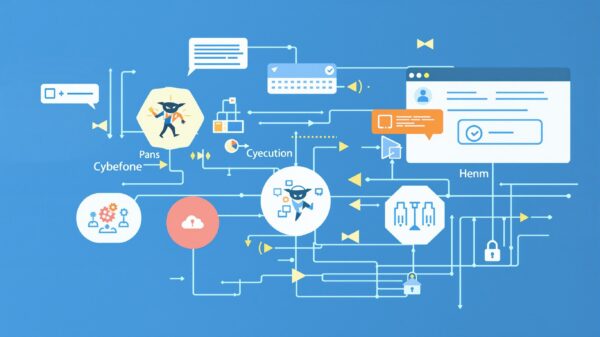In the digital age, cybersecurity is a continuous battleground where individuals and organizations must protect their data from unauthorized access. One of the most insidious methods employed by cybercriminals is the Man-in-the-Middle (MitM) attack. This comprehensive guide will delve into what MitM attacks are, how they work, and the measures you can take to safeguard your information.
What is a Man-in-the-Middle Attack?
A Man-in-the-Middle attack occurs when a malicious actor inserts themselves into a two-party transaction. By intercepting and secretly relaying, and possibly altering, the communication between two parties who believe they are directly communicating with each other, the attacker can steal sensitive information or inject malicious data.
The Mechanics Behind MitM Attacks
Understanding the Intrusion: At its core, a MitM attack exploits the real-time processing of transactions, conversations, or data transfers. The attacker needs to be able to intercept the messages between the two parties and then seamlessly relay them without raising suspicion.
The Role of Interception: For a MitM attack to be successful, the attacker must intercept the communication. This can be done through various methods, such as Wi-Fi eavesdropping, DNS spoofing, or using malware to compromise a network device.
Common Types of Man-in-the-Middle Attacks
MitM attacks come in various forms, each with its own unique method of interception and potential damage.
Wi-Fi Eavesdropping
Unsecured Wi-Fi Networks: One of the simplest forms of MitM attacks, Wi-Fi eavesdropping occurs when an attacker monitors unsecured wireless communications. Public Wi-Fi networks are particularly vulnerable to this type of attack.
The Risks of Convenience: While it’s convenient to connect to free Wi-Fi, doing so can expose your data to anyone who might be snooping on that network. Personal information, login credentials, and financial data can easily be compromised.
DNS Spoofing
Hijacking the Road Signs: DNS spoofing involves corrupting the address book of the internet, the Domain Name System. By directing users to fraudulent websites, attackers can collect data or distribute malware.
The Illusion of Legitimacy: The danger lies in the fact that these fake websites can often look identical to the legitimate ones, tricking users into entering their sensitive information without a second thought.
SSL Stripping
The False Sense of Security: SSL stripping is a technique used to downgrade a secure HTTPS connection to an insecure HTTP connection. This allows the attacker to intercept data that would have otherwise been encrypted.
Monitoring the Downgrade: Users may not notice the absence of the ‘lock’ icon in their browser’s address bar, indicating a secure connection, making it easier for attackers to siphon off sensitive information.

How to Detect a Man-in-the-Middle Attack
Identifying a MitM attack can be tricky, but there are signs that can alert you to potential interference.
Unusual Account Activity
The Red Flags: If you notice unexpected activity in your online accounts, such as password change notifications or unfamiliar transactions, it could be a sign of a MitM attack.
Keeping Track: Regularly monitoring account activity is crucial for early detection of any suspicious behavior that might indicate compromised security.
Website Security Certificates
Certificate Warnings: Browsers will often alert you when there is a problem with a website’s security certificate. While these warnings can sometimes be false alarms, they can also indicate a MitM attack.
Verification is Key: Always verify the security certificate of a website, especially when handling sensitive information. If the certificate doesn’t match the website’s domain or has expired, it’s best to avoid the site.
Preventing Man-in-the-Middle Attacks
Protecting yourself against MitM attacks requires a proactive approach to cybersecurity.
Use of Encryption
Securing the Channels: Encryption is your first line of defense. Using HTTPS, employing VPNs, and utilizing end-to-end encrypted messaging services can significantly reduce the risk of data interception.
The Power of SSL/TLS: These protocols create a secure, encrypted connection between your browser and the web server, making it much more difficult for attackers to eavesdrop on your communications.
Keeping Software Up-to-Date
Closing the Gaps: Regularly updating your software and operating systems is essential. These updates often contain patches for security vulnerabilities that could be exploited by attackers.
Staying Ahead: Cybercriminals are always looking for weaknesses. By keeping your software current, you’re better equipped to protect against the latest threats.
Avoiding Public Wi-Fi for Sensitive Transactions
Assessing the Risk: Public Wi-Fi is convenient but using it for banking, shopping, or accessing sensitive information can open you up to MitM attacks.
Safe Practices: If you must use public Wi-Fi, ensure that you are using a reputable VPN service to encrypt your data and protect your online activities from prying eyes.
Educating Yourself and Others
Awareness is a critical component in thwarting MitM attacks.
Understanding the Threats
Knowledge is Power: The more you know about the different types of MitM attacks and their indicators, the better you can prepare and protect yourself.
Sharing Information: Educating friends, family, and colleagues about the dangers of MitM attacks and how to recognize them can help create a more secure online environment for everyone.

Training and Workshops
Learning Together: Participating in cybersecurity training sessions and workshops can provide valuable insights into protecting personal and organizational data from MitM and other cyber threats.
Staying Informed: As cyber threats evolve, so should your knowledge. Regular training ensures you’re up to date with the latest security practices.
Advanced Security Protocols
As technology advances, so do the protocols designed to safeguard against MitM attacks.
Multi-Factor Authentication
An Extra Layer of Security: Multi-factor authentication (MFA) requires more than just a password to access an account, making it much harder for attackers to gain unauthorized entry.
Biometrics and Tokens: Incorporating elements like biometric verification or physical tokens adds additional barriers for any would-be attackers.
Network Security Tools
Monitoring and Protection: Employing network security tools like firewalls, intrusion detection systems, and anti-malware software can help detect and prevent MitM attacks.
The Importance of Vigilance: Regularly reviewing security logs and setting up alerts for unusual network activity are crucial steps in identifying potential MitM intrusion attempts.
The Future of Man-in-the-Middle Attack Prevention
As technology evolves, so do the methods to combat cyber threats like MitM attacks.
Innovations in Cybersecurity
Adapting to Change: The cybersecurity industry is continually developing new technologies and protocols to outpace cybercriminals.
Emerging Tech: From AI-driven security systems to blockchain-based authentication, the future of MitM attack prevention looks promising and innovative.
Collaboration Across Industries
A United Front: Combating MitM attacks is not just an individual effort; it requires collaboration across various sectors and industries.
Sharing Knowledge: By sharing information and best practices, organizations can collectively strengthen their defenses against MitM and other cyberattacks.
Conclusion
Man-in-the-Middle attacks represent a serious threat to our online security, but by understanding how they work and taking the appropriate preventative measures, we can significantly mitigate the risks. Staying informed, employing robust encryption, updating software regularly, avoiding risky online behaviors, and using advanced security protocols are all part of a comprehensive strategy to protect against MitM attacks. By being proactive and vigilant, we can help ensure our personal and professional data remains secure in an increasingly connected world.






















